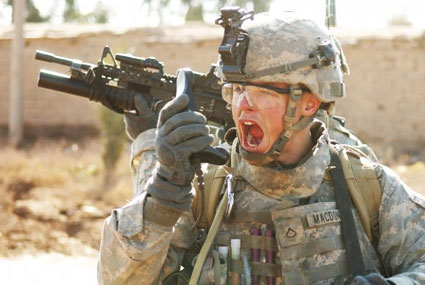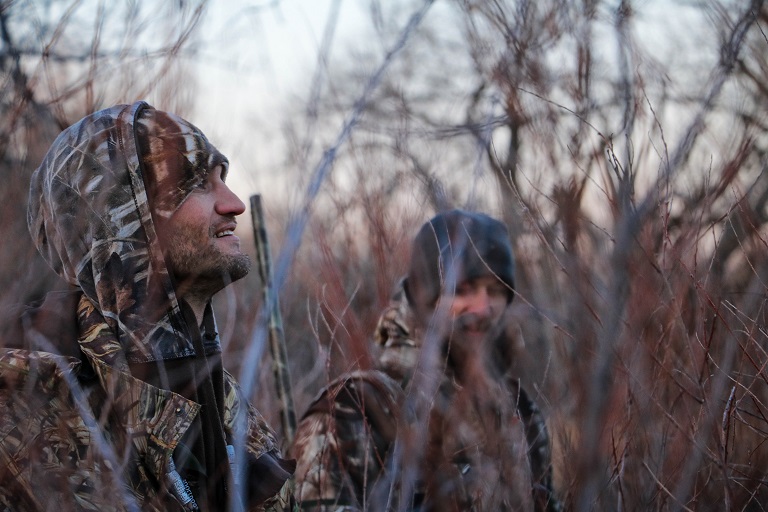
15th Nov 2018
Airsoft Radio - Everything You Need To Know
So, you’ve reached the point in your airsoft career where you want to investigate using a radio system. Maybe you’ve got a squad that needs to communicate over long distances, or maybe you’re a solo player looking to get more involved.
Whatever your reasons, using a radio can really improve your airsofting experience, but there are a few things you need to know (laws in the UK etc), and we have some great advice we can pass along to save you from losing time and money too.
Before we start, the world of airsoft is a deep and complicated one, if you’re looking for radio advice for a MilSim type event, this article is not going to be in-depth enough to let you set up a dual-radio, single comtac application. It’s suited to your average skirmisher type, who just wants to get better communication going within their team.
UK Radio Law
The first thing is to make sure you’re not falling foul of any laws. Now the UK takes communications offences pretty seriously, so you will want to make sure you’re staying legal. Utilising a radio that is too powerful for instance, will put you on the wrong side of the law.
In the UK, radio transmitters are controlled by the Office of Communications (Ofcom). Ofcom controls who can transmit, where and on what frequency. They are the “gate keepers” and prevent users from interfering with each other by issuing licenses to users. Operating without interference, as you may imagine, is particularly important for emergency services, military, or similar services that need to communicate efficiently and reliably.
License Free Radios
So how come you can just buy radios off the shelf? These radios are known as “license-free” or PMR446 radios (named for the EU standard to which they conform, Personal Mobile Radio 446MHz). They are a low power radio outputting up to 0.5w and operate within the same 16 channels.
For many airsofters, this kind of radio will be plenty for your needs. It’s described as being ideal for “small-site, same-building and line of sight outdoor activities”. A high-quality handset should be strong enough to cover most small to medium airsoft sites and should have enough channels for the average number of radio users on site.
Simple UK License Radios
If you’re planning on playing over large fields, dense buildings or areas with a lot of radio traffic, you may wish to upgrade to a more powerful radio. To do this in the UK, you will need a quick and easy-to-apply-for license known as the “Simple UK Light”, available immediately from Ofcom online.
This license entitles you to use radios 10X more powerful than a license free radio (5w output), which naturally opens a lot more range for you to use them over and increases reliability. The license costs £75 and is valid for 5 years. You’ll have access to fifteen frequencies across the Business Radio frequency bands and you must coordinate band usage with other users.
Accessories
Now, simply having a radio isn’t really going to cut it when it comes to airsoft. You rarely have a hand free to operate it and you don’t want to be taking a hand away from your weapon to coordinate your team. This is where you accessories come in.
Almost all high-quality radios that you buy nowadays will come with a headset of some kind. You can always use these, but they can be uncomfortable and may not go with the impression that you’re looking for.
Plugs
You radio will have a plug on the side somewhere. This is a plug that allows you to use headphones and other accessories with your radio to make it easier to use. This is where it’s important to pay attention to the type of plug your radio has. The plugs may look similar, but they’re wired slightly differently and come in varying shapes and sizes. A quick google will save you a lot of money.
PTT, Mics & Headphones
Most airsofters use a “PTT” or a “Push to talk” button. It’s a button that sits somewhere on your rig, that allows you to easily operate the radio and begin speaking. They’re typically then plumbed into a headset and microphone for constant covert sound. You don’t want your teammate’s chatter to be broadcast and giving away your position.
Work out what you want from your radio set-up and what you want it to look like. My personal favourite is to use a “fist-mic”, they’re the “trucker style” microphones which have a speaker built in, with a PTT button on them and a small headphone jack. When it’s plugged into the radio, I can use it as a PTT, a speaker and a microphone all in one. However, I almost always have the fist-mic plugged into my active hearing protection, so the radio’s audio is played into my headset. It’s a simple and flexible set-up. Why do I wear hearing protection? There’s a whole blog here on it.
Batteries
Most radios will last through a day of airsoft, but you never know when you might need one. Severe cold or heat could cause the batteries to not last as long as expected and could leave you without comms when you need them! Pick up and spare battery and leave it in your rig (not in your bag in the safe zone). Don’t forget to charge it up before games.
Pouch
Make sure you get yourself a strong, reliable pouch that’s not going to let your radio slip out mid-game. Positioning your radio pouch can be a tricky one. Do you put it close, where you can reach it so you can turn it on, adjust the channels and the audio? Or do you put it out of the way, so you can use the space for something more important? That’s a choice only you can make and train with, there’s no right and wrong answer here.
